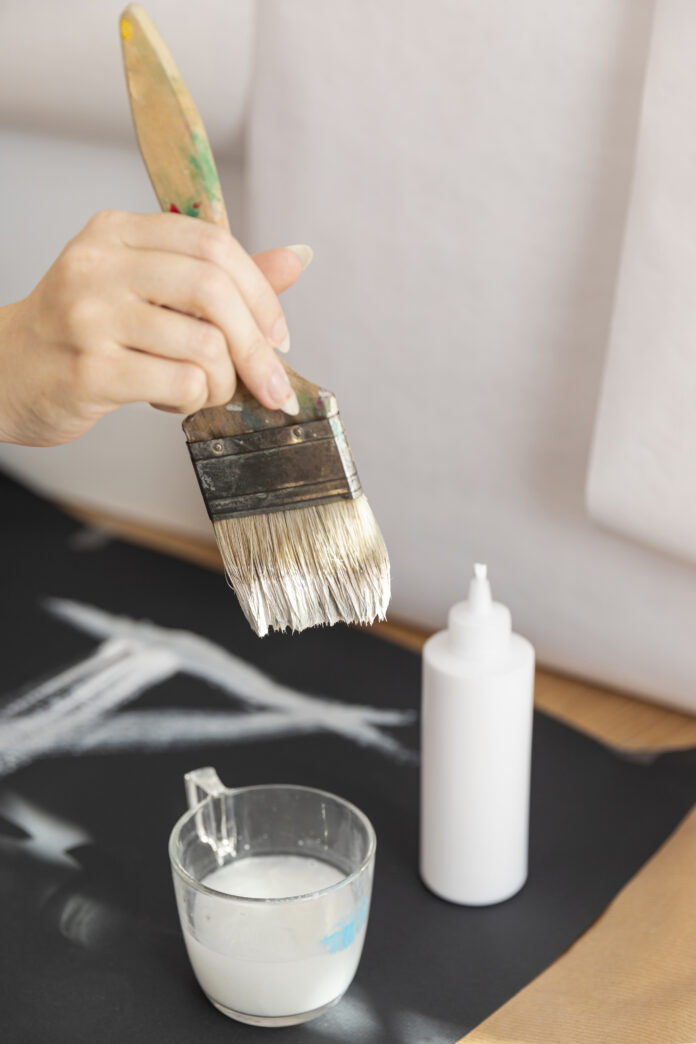Introduction
Gel stains have become a go-to choice for woodworking projects, especially when it comes to achieving a controlled, even finish on challenging surfaces. Unlike traditional liquid stains that penetrate wood deeply, gel stains sit on the surface, making them ideal for softwoods and previously finished wood. They’re thick, easy to apply, and reduce the risk of blotching, especially in woods like pine and birch. In this guide, we’ll explore everything you need to know about woodworking with gel stains, including the benefits, limitations, and best practices to ensure a smooth, professional finish for any project.
What Are Gel Stains?
Gel stains are a type of wood stain with a gel-like consistency, thicker than traditional liquid stains. Made of pigments and binders, gel stains sit on the wood surface rather than soaking into the wood fibers, which allows for better control and even application. They work well for both bare wood and previously finished surfaces, making them highly versatile for various woodworking projects.
The Pros of Using Gel Stains
1. Easy Application and Control
- Thicker Consistency: One of the primary benefits of gel stains is their thick consistency, which makes them much easier to apply. Unlike liquid stains that can be runny and messy, gel stains stay in place and offer more control.
- Less Dripping: With their gel-like consistency, gel stains reduce the likelihood of drips and runs. This is especially beneficial for vertical surfaces or edges, as the stain won’t pool or leave streaks, creating a smoother, even coat.
- Ideal for Beginners: Because they’re easy to control, gel stains are a popular choice for beginner woodworkers. They don’t require as much finesse as liquid stains, which often need careful application to avoid blotches.
2. Minimal Blotching on Softwoods
- Suitable for Difficult Wood Types: When staining wood types that are prone to blotching—like pine, birch, and maple—gel stains are a great choice. They provide an even finish by staying on the surface, preventing uneven absorption that can result in blotchy stains.
- Improved Color Consistency: Gel stains offer a more uniform color on softwoods and difficult surfaces. By adhering to the surface, they create an even look without requiring pre-stain conditioners, which are often necessary with liquid stains.
3. Versatile Application on Finished and Unfinished Wood
- Use on Different Surfaces: Gel stains work well on both finished and unfinished wood. This makes them versatile for projects where you want to update or refresh the color of previously finished furniture or cabinetry.
- Minimal Sanding Required: When using gel stain on previously finished surfaces, you don’t need to sand down to bare wood. A light sanding to create a smooth base is often enough, which saves time and effort, especially on large pieces.
The Cons of Using Gel Stains
1. Longer Drying Times
- Takes Time to Set: Gel stains generally take longer to dry than liquid stains. Depending on humidity, temperature, and application thickness, drying times can vary from a few hours to a full day. This delay can extend project timelines, especially if multiple coats are needed.
- Prone to Smudging: Because they take longer to dry, gel stains are more susceptible to accidental smudges or fingerprints if not left undisturbed. It’s important to allow adequate drying time between coats to avoid disrupting the finish.
2. Surface-Only Penetration
- Limited Wood Grain Enhancement: Unlike liquid stains that soak into the wood fibers and enhance the grain, gel stains primarily sit on top of the surface. While this feature can be a benefit for even applications, it doesn’t allow for as much wood grain detail or character to show through.
- May Appear Less Natural: For projects that aim to emphasize the natural beauty and texture of the wood, gel stains may not be the ideal choice. Since they don’t penetrate deeply, the finish can sometimes look more like paint than a traditional stain.
3. Less Effective on Large, Flat Surfaces
- Uneven Appearance Possible: On large, flat surfaces like tabletops or wide panels, achieving an even finish with gel stain can be challenging. Applying it in thin, even layers and blending carefully is essential to avoid visible brush strokes or streaks.
Best Practices for Using Gel Stains
1. Preparation and Sanding
Lightly sand the wood surface with fine-grit sandpaper to create a smooth base. For previously finished surfaces, a gentle scuffing is enough to allow the stain to adhere better.
2. Application Tools
Gel stains can be applied using a brush, foam brush, or lint-free cloth. Apply a generous layer, then wipe off excess with a clean cloth, working with the wood grain.
3. Layering and Drying
Allow ample drying time between coats. If you’re applying multiple layers, make sure each coat is fully dry before adding another to prevent smudging and uneven coverage.
Benefits of Using Gel Stains for Woodworking Projects

Gel stains offer a range of advantages that make them popular among woodworkers. They’re thick and don’t penetrate as deeply as traditional stains, giving you greater control over the application and final look. Here are some key benefits:
- Event Coverage on Difficult Woods: Gel stains are ideal for woods that are prone to blotching, like pine and cherry. Since they sit on top of the surface, gel stains reduce the risk of uneven absorption, creating a smooth, uniform color.
- Great for Vertical Surfaces: The thicker consistency of gel stains prevents them from running or dripping, making them perfect for vertical surfaces like cabinet doors and paneling.
- Works on Finished Surfaces: Unlike traditional stains that need bare wood, gel stains can be applied over existing finishes, making it easy to refresh or recolor older pieces without extensive sanding.
Conclusion
Gel stains offer a practical, easy-to-apply alternative to traditional stains, especially suited to projects where full coverage and even color are priorities. While they have some limitations—particularly in color selection and their inability to enhance wood grain deeply—they’re an excellent choice for softwoods, furniture refinishing, and projects requiring control and precision. Understanding the pros and cons will help you decide if gel stains align with your woodworking goals, ensuring your next project turns out beautifully and with a lasting finish.














